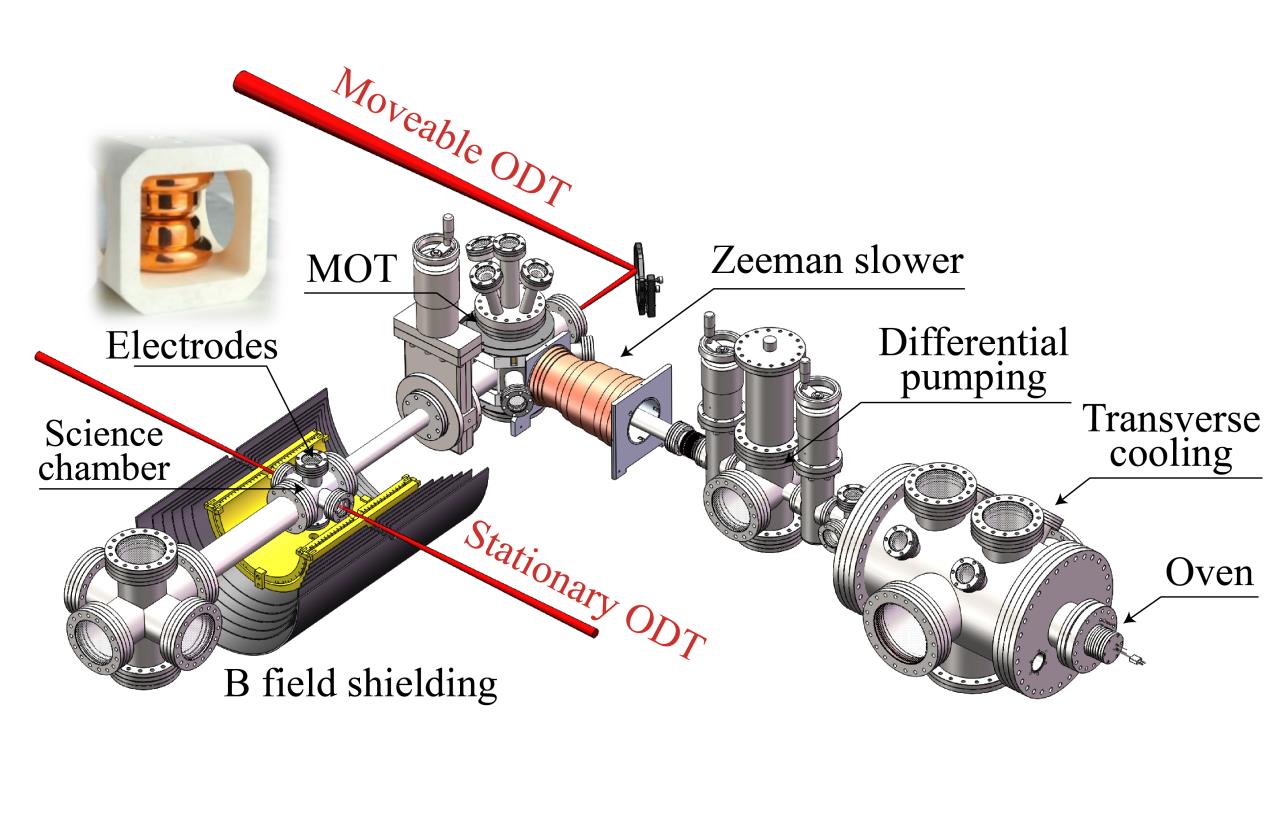Experimental test of time reversal symmetry
Search for an intrinsic electric dipole moment of Radium-225
An intrinsic electric dipole moment (EDM) of an atom signifies the violation of both parity (P) and time-reversal (T) symmetries. It may originate from CP violation of the constituent electrons the nucleus. Under CPT, a symmetry regarded to be more fundamental, T-violation is then equivalent to CP-violation. In the Standard Model, the atomic EDM is extremely small and undetectable under today’s technology. However, various extension models, including Supersymmetry, Multi-Higgs or Left-Right Symmetric Model, generally predict a much larger EDM value that could be detected in the current- or next-generation experiments. Results of EDM measurements can be used to constrain these extension models and search for new physics beyond the Standard Model at the TeV energy scale. It is particularly important to understanding the mystery of matter-antimatter asymmetry in the early Universe.
In the experiment, 225Ra atoms are first captured into a magneto-optical trap (MOT), and then laser-cooled and transferred into an optical dipole trap, which is used to transport the cold atoms into a region of a uniform, weak magnetic field and a strong electric field. The atoms are polarized and allowed to precess freely. Any difference between the two precession frequencies, measured while the electric field is parallel or anti-parallel to the magnetic field, is the sought-after EDM signal, along with many possible systematic effects that need to be tracked down and eliminated.
Ytterbium-171 (171Yb) is a stable isotope with atomic properties and transitions similar to those of 225Ra. It is particularly useful as a proxy for testing various measurement schemes and investigate systematic errors. Moreover, future high-precision measurements of 225Ra EDM need to use 171Yb as a co-magnetometer for the purpose of correcting effects of magnetic field noise. We have built an apparatus for 171Yb EDM measurement to develop cold-atom method and investigate systematic errors.
The apparatus of 171Yb EDM experiment is shown in Fig. 2. 171Yb atoms are first captured into a magneto-optical trap (MOT), and then laser-cooled to ~20 μK and transferred into a moveable optical dipole trap (ODT), which is used to transport the cold atoms into a region of a uniform, weak magnetic field and a strong electric field, then the atoms are transferred into another stationary ODT, in which we measure the EDM. The atoms are polarized and allowed to precess freely. Any difference between the two precession frequencies, measured while the electric field is parallel or anti-parallel to the magnetic field, is the sought-after EDM signal, along with many possible systematic effects that need to be tracked down and eliminated.
In the experiment, by introducing a dressing laser, we develop a quantum-non-demolition (QND) measurement scheme to detect the atomic spin state and suppress the optical detection noise to below the quantum projection noise. Compared with the conventional spin-state detection method using a non-cycling transition, the QND method dramatically improves the spin-state detection efficiency. We improve the spin precession coherence time to more than 300 s and achieve a precision of ~100 nHz in measuring the nuclear spin precession frequency (~ 15 Hz). With the substantial improvement in precision, we observe the parity-mixing effect in ODT for the first time and successfully suppress this systematic effect by precise control of ODT. On this bases, we measure the EDM of 171Yb atoms for the first time and find an upper limit of 1.5×10-26 e·cm (95% C. L.). In the future, we plan to further improve the precision of 171Yb EDM measurements by improving the electric field, suppressing magnetic field noise and developing co-magnetometer methods.

